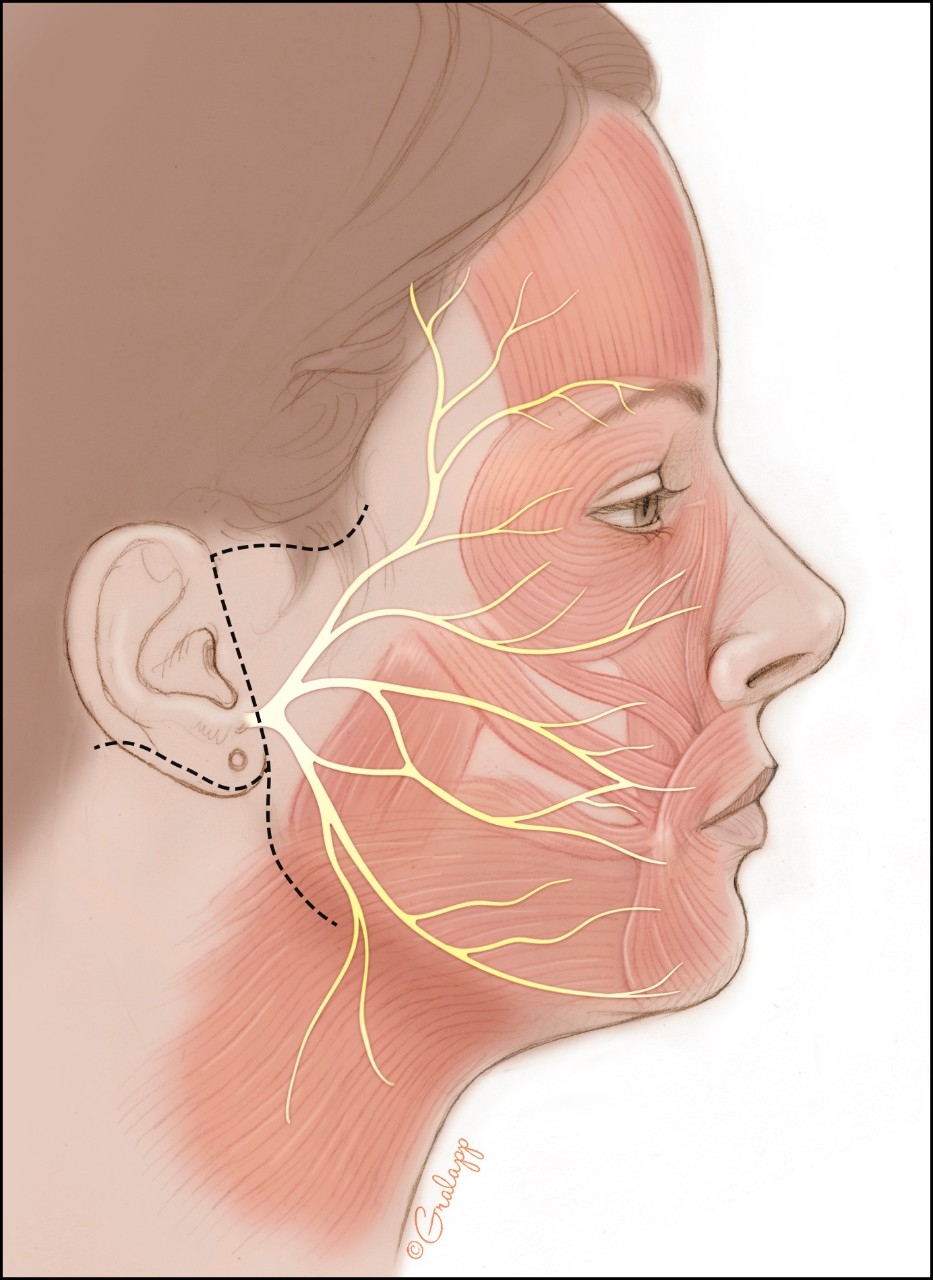The cells that transmit information within the facial nerve originate at the base of the brain, or brainstem, in an area called the pons. So the nerve must travel through the base of the skull in order to reach the face. Along this route, the facial nerve travels in close proximity to the eighth cranial nerve, the vestibulocochlear nerve, which is responsible for hearing and balance. The facial nerve exits the base of the skull at the stylomastoid foramina, an opening in the bone located near the base of the ear.

The facial nerve then enters the parotid gland, and branches into five divisions (see above). The facial nerve has five main branches, although the anatomy can vary somewhat between individuals. The branches are, from top to bottom: frontal (or temporal), zygomatic, buccal, marginal mandibular, and cervical. Each of these branches provides input to a group of muscles of facial expression.


comments